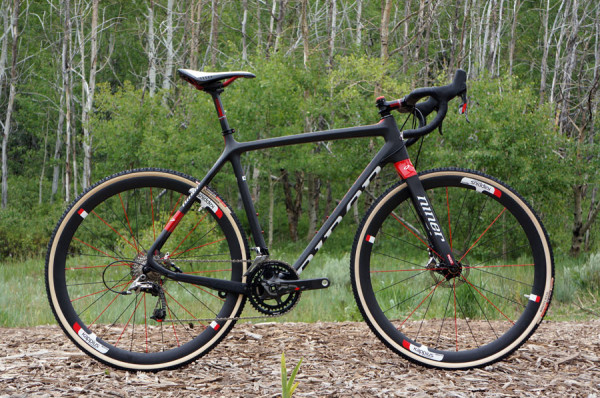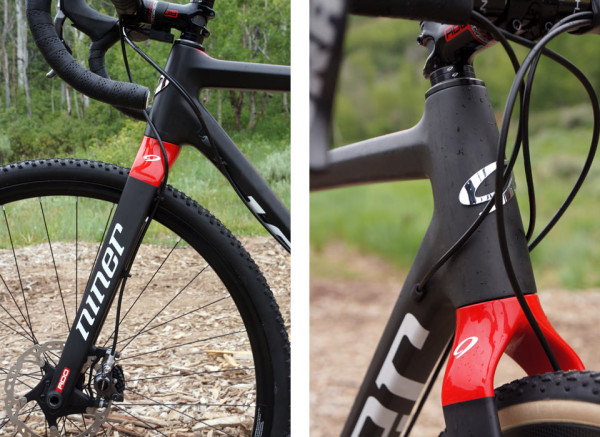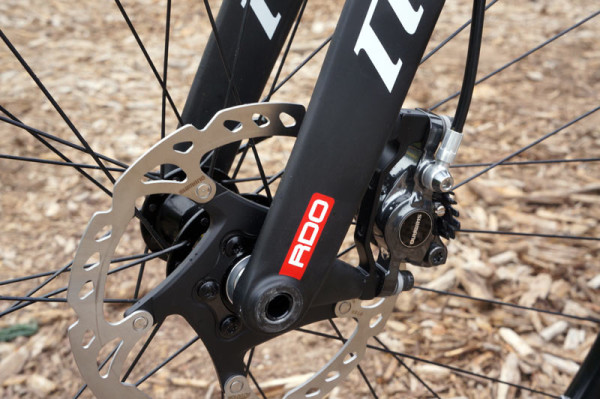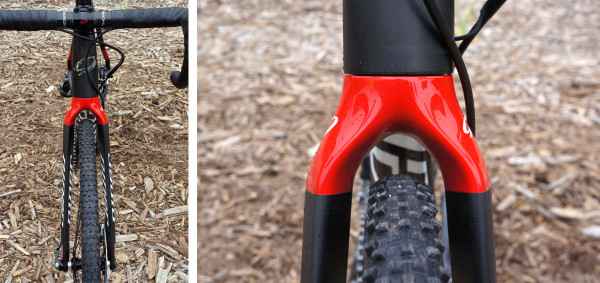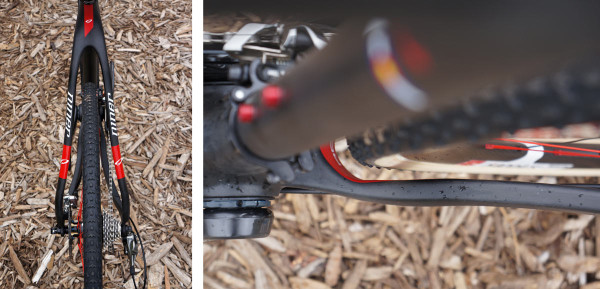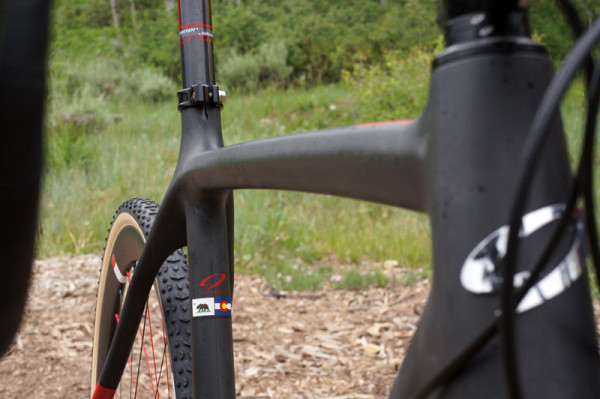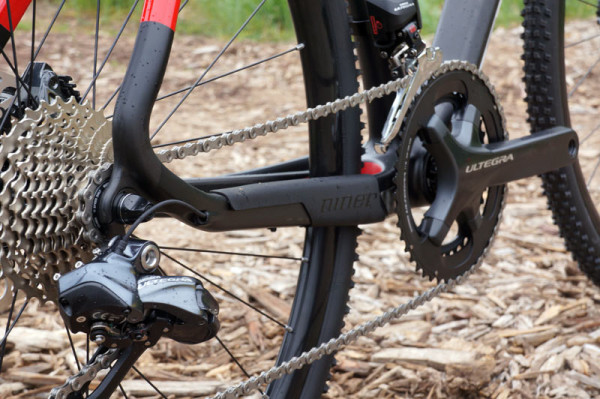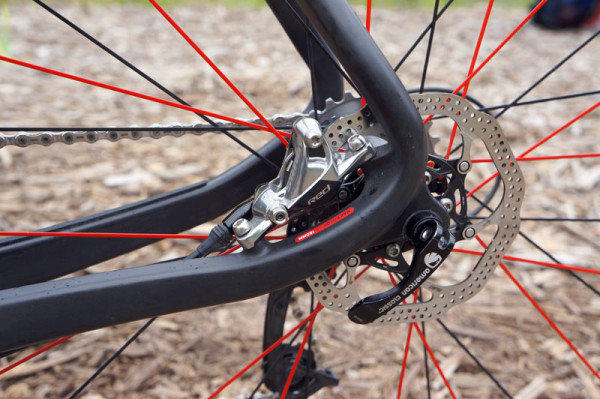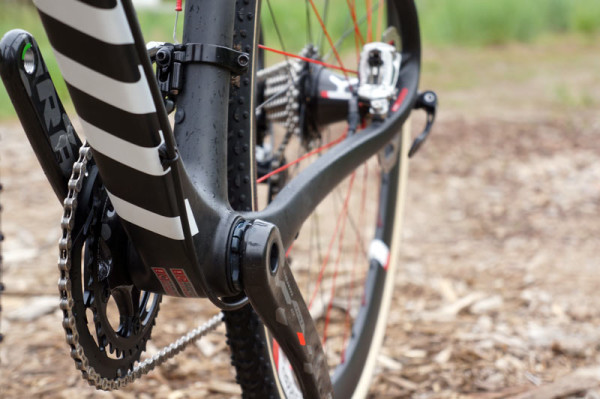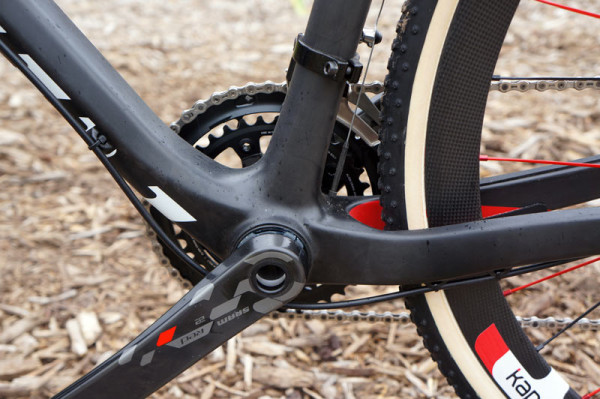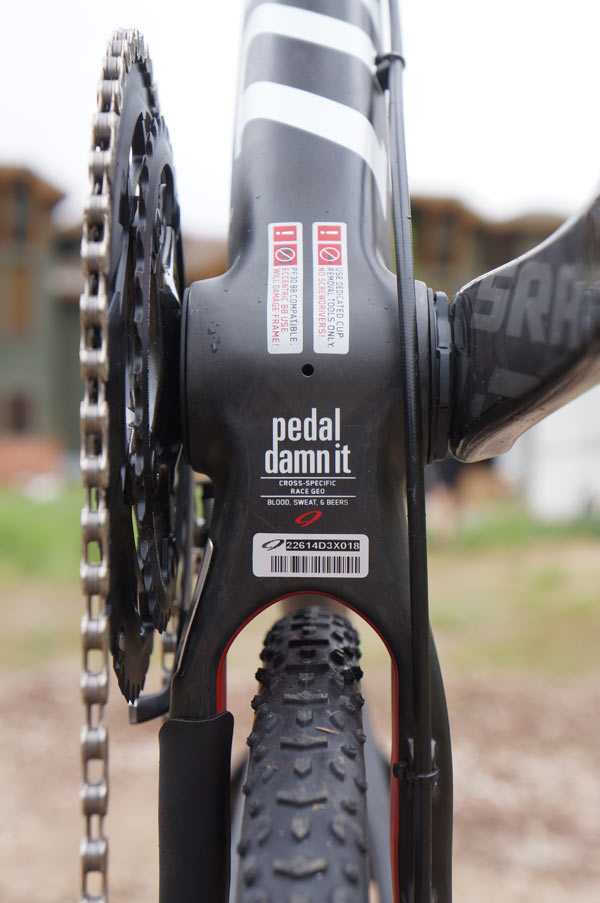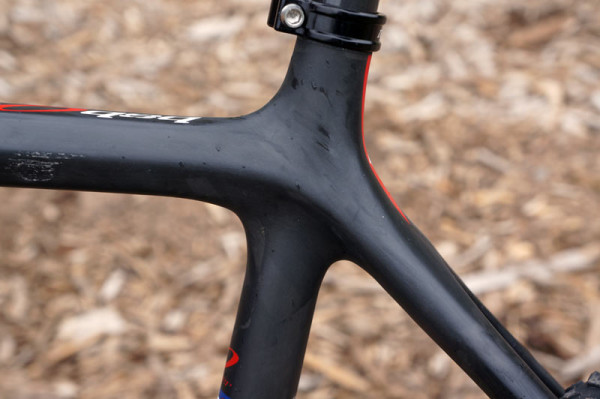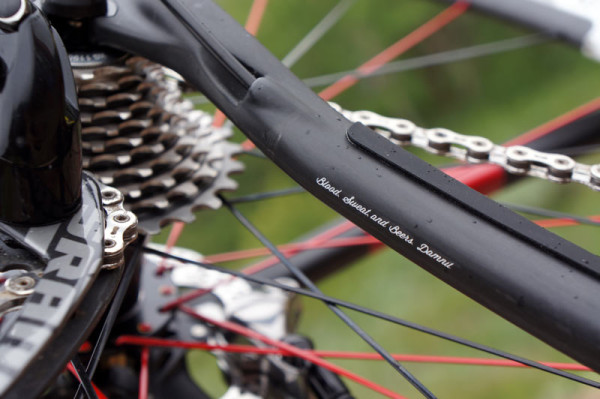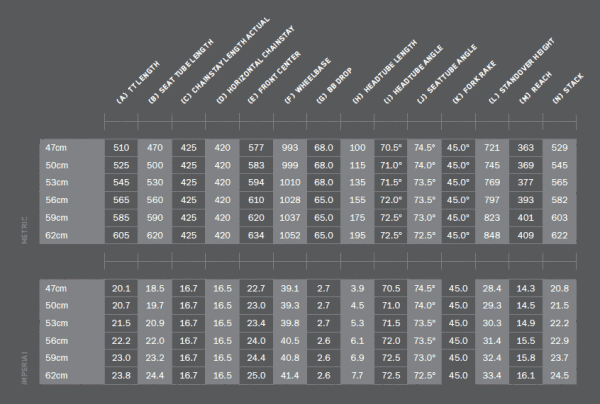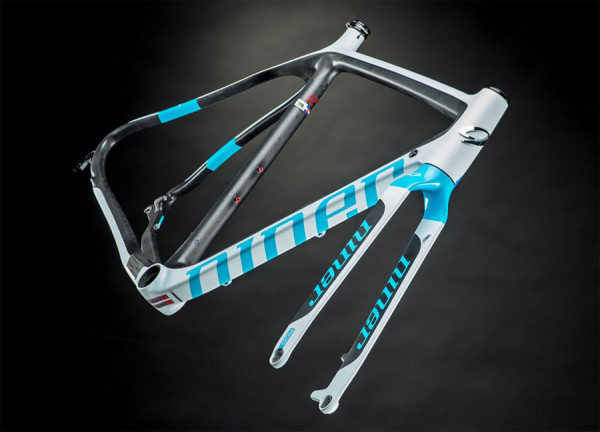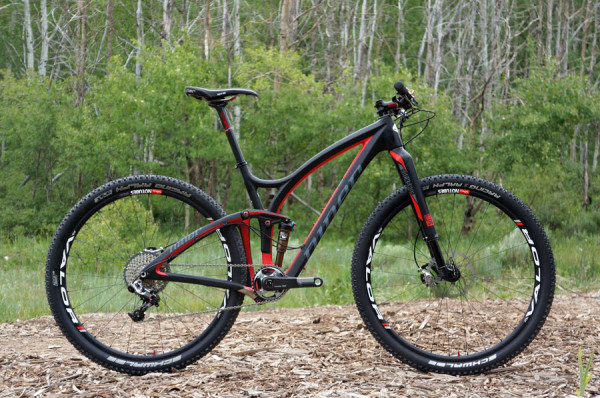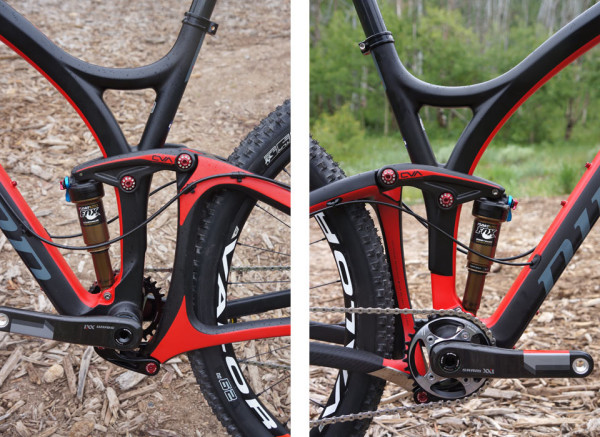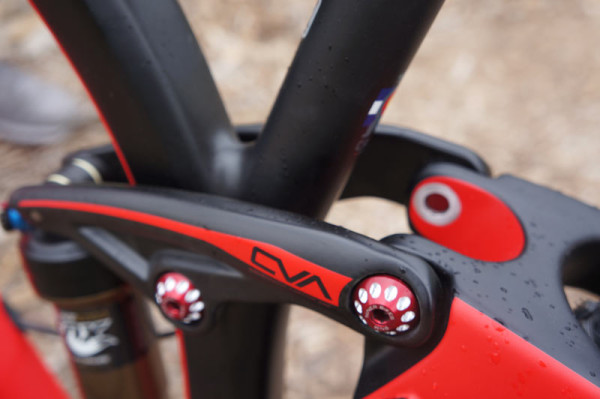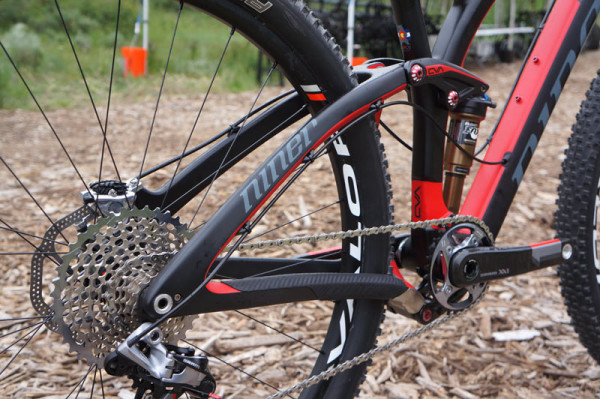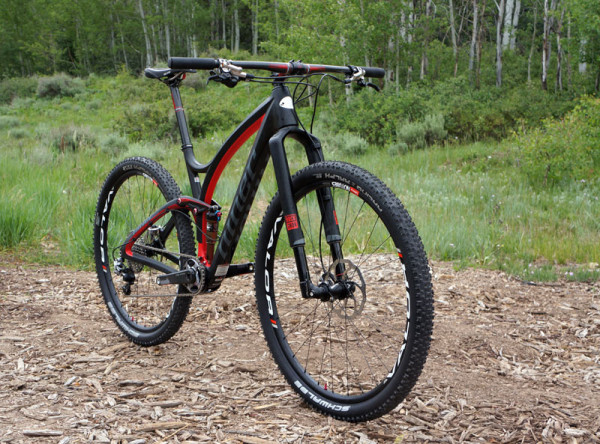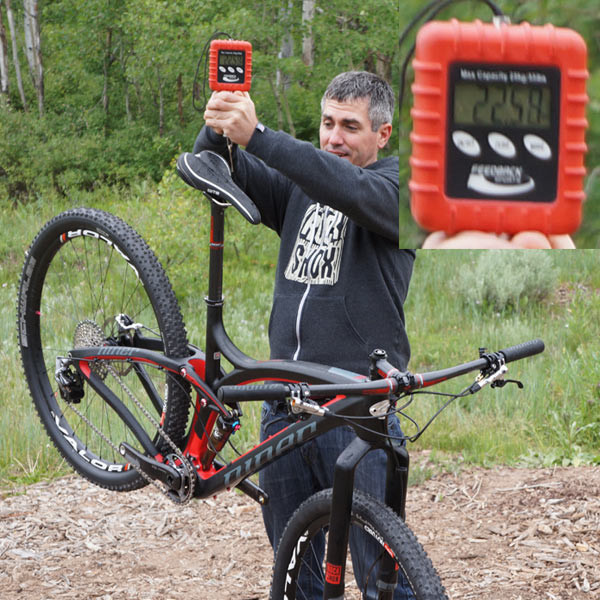It’s been teased, and people have been building AIR9 Carbon hardtails with drop bars for years. And there’s enough Niner employees that race ‘cross that it needed to happen. After all, the RLT9 gravel road bike proved they could translate their mountain bike heritage into something new.
The introduction of the new Niner BSB 9 RDO gave them an opportunity to introduce a new carbon fiber frame production process, too. Called Carbon Compaction System, it uses a pre-shaped styrofoam mold that the carbon is laid up around. This provides them with the shape they want and a firm platform to build each frame part around. The benefits are multiple: First, it sets the carbon in the exact position it should be in without any shifting from a bladder inflating after layup. Second, it means less excess resin pooling inside the frame, so less weight and waste. Third, it makes for a perfectly smooth inside wall with no wrinkles or fibrous looseness. This means fewer opportunities for weak spots.
Technically, there’s still a bladder around the styrofoam that’s inflated to fully compress the carbon against the outer, metal mold for proper compaction. But starting with the firm styrofoam core gets them very, very close to the final shape – much closer than wrapping around a floppy silicone core. Once heat molded and cured, the styrofoam molds shrink to less than half during the process and are simply pulled out and discarded. The whole design means they have more control over the process which leads to more precise construction.
Of course, they also had to come up with a cool name. The Niner BSB means…
NINER BSB 9 RDO – BLOOD, SWEAT, BEERS
Starting at the front, the fork is an RDO version of what was introduced on the RLT, but with a thru axle. It’s still a 400mm axle-to-crown and 45mm offset. Weight is 530g, same as the RLT. The Maxle adds 60g, about the same as a decent skewer. The shaping is a bit different, though, with flatter edges than the RLT version.
The benefit is increased stiffness laterally for a racier feel. It also benefits disc brake performance -or, rather, non-braking performance- by reducing the likelihood of rotor rub under hard, side-to-side-rocking sprints and hard cornering. It’s built for 140mm and 160mm rotors. Like it? They’re considering offering it aftermarket for use on any bike.
Tire clearance looks to be wide open for up to 42c (we’re confirming).
The front triangle shares a lot of design cues from the AIR9 RDO but with streamlined tube shapes for a limber appearance. Ridges on the sides keep it laterally stiff, but the flattened sections are designed to allow vertical flex to smooth out the ride.
The cable routing follows the RLT’s downtube entry ports, something you’re likely to see on more and more models moving forward. Since it’s not running through the head badge, they’ve got a new chromed ‘9’ logo badge. Cable ports are new rubber grommets available for either mechanical or electronic drivetrains, as well as solid plugs.
Shifting will run full length internal cable housing…another thing you’ll see on more models. Unless you get the Di2 equipped models. All frames are electronic/mechanical ready with compatibility for internal seatpost batteries. (Note: The SRAM equipped bike shown in some pics is the build for their sponsored Team CLIF riders, not one available to purchase.)
The rear brake hose/cable runs on the lower side of the downtube, which should be out of the way when shouldering the bike and grabbing the downtube.
Niner stuck with the tried and true quick release for the rear. They, and the riders they polled, preferred the lighter weight and quicker wheel changes afforded by it, and it didn’t show measurable improvements in stiffness or performance with a thru axle in testing.
The bottom bracket is PFBB30 with an open shell design. This means easier cable and wire routing, but no BioCentric EBB compatibility.
The top tube flows into the seatstays, which curve into the chainstays. The front triangle is molded as a single piece, then each chainstay is molded past the rear axle and up to where the decal stripe is on the seatstay. The rest of the seatstay is another piece. Seatpost is 27.2 to save weight and keep it comfy.
They used ultra-thin decals and a lightweight satin clear coat finish with minimal paint to save weight. The result is a size 56 frame with a claimed weight just under 1,000g as a bare frame with no hardware. Complete bikes came in at 17.86lb (8.1kg) for the top level Ultegra Di2 build. The team bike came in at impressive 15.59lb (7.07kg) with the new SRAM Red Hydro-R disc brakes and prototype Kappius Components tubular wheels.
Geometry compared to RLT is as follows. Headtubes are a little lower to put you in a racier position. Head tube angles are about half a degree steeper across the size range, chainstays are 425mm (10mm shorter than RLT) and BB height is 2-3mm taller to keep the pedals from hitting over obstacles and in the corners while you continue to hammer away.
They’ll be available in 3cm size increments: 47/50/53/56/59/62. Click image to enlarge for geometry chart (above) and build specs (below).
At launch, they’ll offer three builds. Conspicuously missing is a 3-Star build, hinting at another option soon. It’s also worth noting that as their flagship RDO model, it’s possible we’ll see a non-RDO carbon fiber version down the road. Pricing for the three builds shown are $6,499 (5-star), $4,399 (4-star) and $2,999 (2-star).
A frameset with headset, seat collar, frame and fork is $2,299. All should be available in time for the 2014/15 cyclocross season.
UPDATED JET9 RDO & LIMITED EDITION RS-1 BUILD
The JET9 RDO gets an updated construction process using the new carbon compaction introduced with the BSB. Actually, all RDO versions starting now will get the new frame construction – RIP, AIR, JET and BSB.
The construction method is, honestly, more for them as a way to improve construction quality and frame durability. A continual improvement. Barrett James, Niner’s product manager, says the ride tuning changes are subtle, but frame weight drops a not insignificant 70g without diminishing strength or stiffness.
It also gets the new, lighter weight paint and clear coat used on the BSB 9 RDO. Here, it shows off more of the carbon, with some of the woven sections more visible on the rockers and elsewhere (unfortunately not very visible in this pic).
The JET 9 RDO remains their endurance race weapon with 100mm of travel in the rear ready for 100 to 120 millimeters up front. All complete bikes are spec’d with 100mm forks.
So, the big news here is the Limited Edition RS-1 build. Racy graphics aside, it gets a complete top shelf build. Drivetrain is SRAM XX1, wheels are Stan’s Valor carbon rims custom built on the new SRAM X0 hubs (which James says are phenomenal) with 24/24 lacing and the new Rockshox RS-1 inverted fork. Brakes are XTR (all build kits across the board get Shimano brakes for current component model year. So, an XO drivetrain will see XT brakes and so forth). Cockpit is Niner RDO with carbon handlebar and seatpost.
Price is $9,999, by far Niner’s most expensive complete bike ever. Credit the fork with a large chunk of that, but it comes in at just 22.5 pounds (for size medium):
